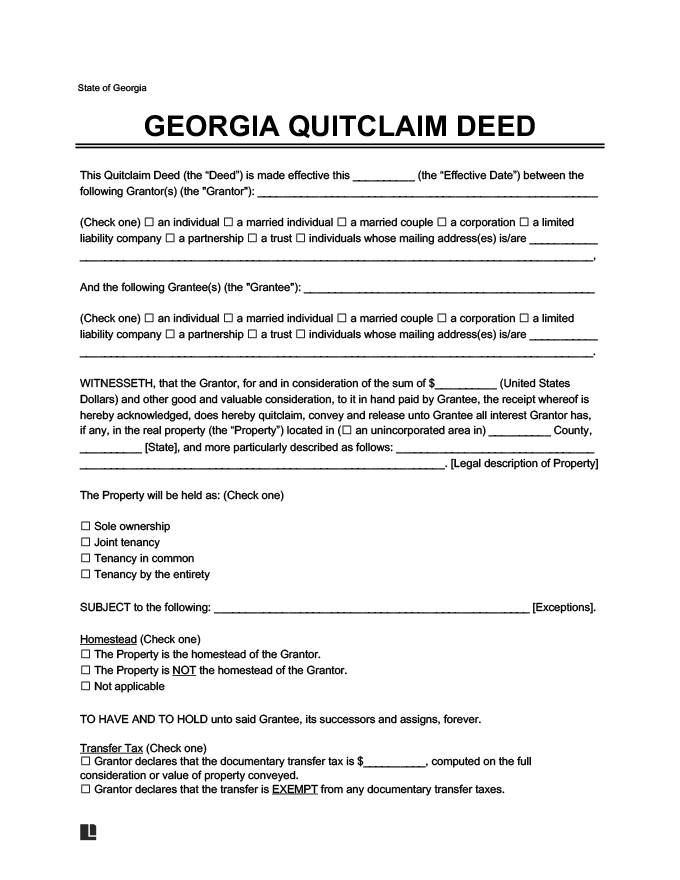When you are filing a quitclaim deed in Georgia, accuracy is critical for avoiding unnecessary legal complications. Follow these steps to simplify deed modifications and property transfers:
- Step 1: Obtain the Property Deed
- Step 2: Copy the Legal Property Description
- Step 3: Complete the Quitclaim Form
- Step 4: Sign and Notarize the Completed Deed
- Step 5: Fill out Real Estate Transfer Tax Form PT-61
- Step 6: File the Deed With the Clerk of the Superior Court
- Step 7: Deliver the Executed Deed to the Grantee
Step 1: Obtain the Property Deed
The property owner should have a copy of the original deed. You will need this to begin the quitclaim process, whether you are transferring real estate interest or simply changing information on the deed.
If you do not have a copy on hand, you can also obtain one through the Clerks of Superior Court website.
Step 2: Copy the Legal Property Description
Transcribe the full property description from the original title into your quitclaim deed. A clear property description is crucial for a valid document.
Your property’s legal description may be based on metes and bounds, county and general militia district, reference to a recorded plat, or a subdivision, lot, and block.
Pull the tax parcel identification number as well. Ga. Code § 44-2-2 requires this number on any recorded deed transferring real estate property.
Step 3: Complete the Quitclaim Form
Draft your deed based on the formatting requirements outlined under Ga. Code § 15-6-61. Generally, the document should be on standard white letter-sized (8 1/2 in. x 11 in.) or legal-sized (8 1/2 in. x 14 in.) paper. A margin of 3 in. is required on the top of the first page. All remaining margins should be at least 1 in. wide. Include a title on the first page that describes the quitclaim deed.
Your document should include grantor and grantee information, return mailing address for the grantee, transfer clause with warranty specifics, legal description of the property, tax parcel ID number, consideration exchanged, and grantor’s signature with notary and witness acknowledgment.
Step 4: Sign and Notarize the Completed Deed
Sign the form before a notary or other authorized officer and disinterested witness, per Ga. Code § 44-5-30.
Other people authorized to acknowledge a quitclaim deed are listed under Ga. Code § 44-2-15. They may include a judge, magistrate, deputy clerk, or clerk. The officer must operate in the county where the property addressed in the deed is located.
Step 5: Fill out Real Estate Transfer Tax Form PT-61
For a quitclaim deed that transfers real estate for consideration, you must disclose the amount using Form PT-61.
You can complete it online, print it, and provide it with the deed when filing.
Step 6: File the Deed With the Clerk of the Superior Court
According to Ga. Code § 44-2-1, you must file the deed with the Clerk of the Superior Court in the county where the conveyed property is located.
The clerk will record and index the document as required under Ga. Code § 44-2-2.
Step 7: Deliver the Executed Deed to the Grantee
According to Ga. Code § 44-5-39, the deed transfer becomes valid as soon as the document is delivered to and accepted by the grantee.
While the document does not require the grantee’s signature, their acceptance of the deed implies agreement with the deed’s terms.
Although delivery and acceptance of the deed create a binding agreement between the grantor and grantee, you must still register it with the Clerk of the Superior Court.
